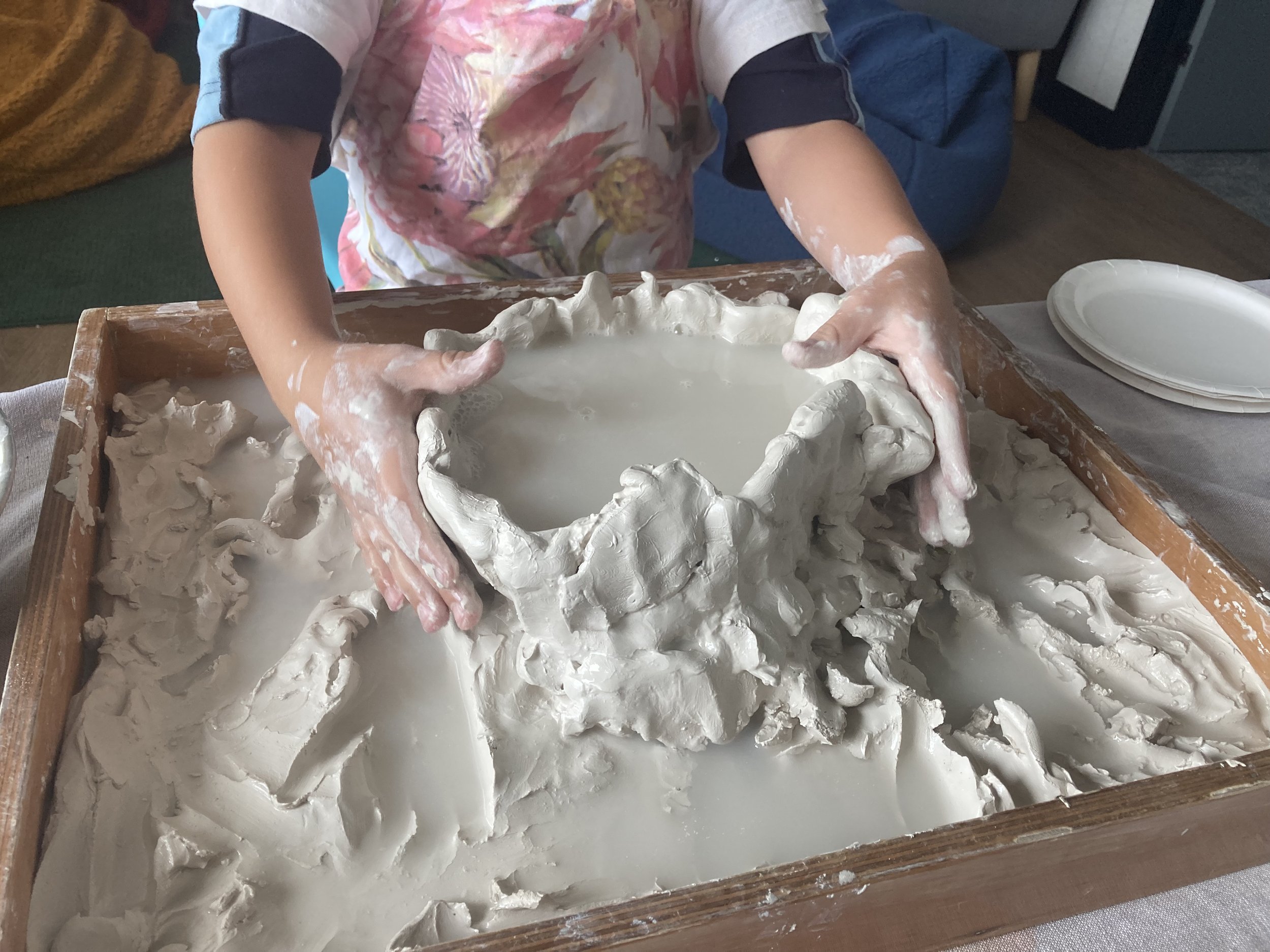Clay Field Therapy® with Children
What is Clay Field Therapy®?
Clay Field Therapy is a very new and unique functional therapy, based on haptic perception, the language of the hands.* Designed to help clients complete any incomplete developmental milestones, it can accelerate the repair of delays to a child’s development caused by environmental or trauma interruptions . (Clare Jerdan, 2024)
How Does it Work?
The key to the effectiveness of this therapy lies in the connection between touch and movement. As I touch the clay, it touches me. This sets up a feedback loop in the body.
The benefit of this sensorimotor feedback is observable in the way it can calm and nourish a child’s nervous system, providing an internal or “felt sense” of safety, relaxation and wholeness.
As children grow comfortable with the touch sensations of the clay, their hands can find rhythmic repetitive movements which are soothing and deeply satisfying. This will bring them more fully into their bodies, expanding their capacity for regulation. Depending on their age and developmental stage, a child may begin to create shapes and structures such as towers, pools, caves or tunnels in the clay, perhaps telling a story as they explore how the clay can be manipulated. In this way they grow confidence in their own physical strength and abilities.
At no point in a Clay Field session will the therapist mention a child’s adverse experience or trauma story directly. While a child may play out scenarios that reflect their life experience, this is not a deliberate or conscious thought process and we do not engage with it on that level.
Top -down vs Bottom-up approaches.
Sensorimotor and body based therapies are very different to counselling or talk therapy, Traditional psychological approaches, such as cognitive behavioural therapy, work at the pre-frontal cortex or “top” level of the brain, where we are engaging with the thought and language centres, and explicit or conscious memories. Hence the nick-name top-down.
With sensorimotor therapies we are working with the lower brain and the brain stem, where we store implicit memories, such as how to walk, swim, or ride a bike, action patterns which once learnt, become automatic and are body memories, no longer requiring conscious thought.. Because they are working at the level of the the lower brain, these therapeutic approaches are referred to as “bottom up.”
The lower brain is is also where traumatic memories are stored, Trauma always involves some form of unwelcome or inappropriate touch, be it in the form of a accident and sudden shock, medical intervention, or physical abuse: Alternatively, neglected infants will experience a lack of touch, which is traumatising to their nervous systems, as all humans are born wired for connection with their care-givers.
This is the key to why sensory and body based therapies can have a such a profoundly positive effect on healing and integrating trauma. Especially when traumatic experiences have occurred in the early months and years of life, before the infant acquired language, such memories definitely cannot be accessed through thinking or speaking. For the child, it is just the way life is.
When engaging in somatic and rhythmic repetitive sensorimotor activities, the client’s nervous system is settled, it becomes regulated through the soothing sensations of the clay and repeated movements. This sense of safety experienced in the present moment can help uncouple trauma memory form the body.
Who is it for?
Emerging PhD research is showing that Clay Field Therapy® is deeply therapeutic, and is particularly effective for children with learning or behavioural challenges, including those who have been diagnosed with attention deficit and hyperactivity. (Cornelia Elbrecht, founder of Clay Field Therapy®)
Developments in neuro-science have shown how body-based therapies such as Clay Field can be effective for addressing and integrating trauma memories, which are always stored in the body. It will be helpful for children who have experienced or witnessed traumatic events,
It will also benefit many children and young people on the Autism Spectrum, and can help anyone who is feeling anxious, sad, fearful or angry, to find new ways of expressing and re-balancing these emotional states.
Pictured:
A six year old girl, diagnosed with ADHD, finds that when she slows down she can manipulate the clay, dig, build a tower, and fill it with warm water. At the end of the session, she experiences the felt sense of safety provided by having her hands packed in a clay cave. The nervous system regulation this provides can be profound. Once a child really knows, feels, and has internalised this new sensation of calm and safety, they are able to recall it, and so expand their circle of capacity.
*For a full description of haptic perception, see Cornelia Elbrecht’s Blog https://www.sensorimotorarttherapy.com/blog/2019/5/17/haptic-perception-as-i-touch-the-clay

